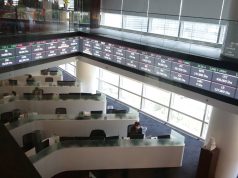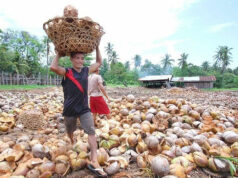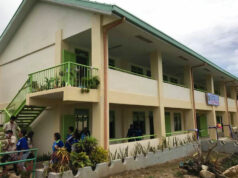Making agriculture recovery sustainable
Over the last five years, agriculture grew by a meager 0.9% per annum. This year is likely to be no exception, considering the impacts of the COVID-19 pandemic and climate change (such as the recent super typhoons Rolly and Ulysses).
So, can Philippine agriculture still grow by three to four percent in the medium term? And reduce rural poverty? Yes, it can, but it will require a paradigm shift.
What is the principal shift? To diversify resource use to broaden the economic base.
Today, more than half of the annual budget for agriculture and irrigation goes to rice. The crop occupies some 30% of physical area and with irrigation of almost 40% of annual harvested area. That leaves 60% for other crops.
Let us consider three factors for diversification: value per hectare, gestation period, and existing business models.
VALUE PER HECTARE
Value is composed of harvested area and unit value (price). The leading crops by area are palay (unmilled rice), coconut, and corn in that order. Far behind are banana, sugarcane, rubber, and cassava.
On gross value per hectare, the leaders are pineapple, banana, tobacco, and mango.
Offhand, what can be discerned? The top three crops in terms of area (palay, coconut, and corn) offer low value. They occupy some 87% of the area and account for 61% of the value. Banana and pineapple comprised 4% of area but contributed 27% of value.
As I have mentioned in my previous articles, productivity is a problem for many local crops.
GESTATION (TIME TO HARVEST)
Crops differ in gestation, i.e., the time from planting to harvesting. It is a consideration in making crop choices. Annuals take less than one year from planting to harvest. But perennials or “permanent” crops take longer. Net present value may be similar but the short gestation means faster cost recovery.
Technology, however, can short-circuit yield and gestation. To cite examples:
a.) Rubber can be tapped normally in six years. But the Sandique technology in North Cotabato can reduce gestation to 3.5 years using large planting materials, and also lead to increased yield.
b.) Coconut hybrids can be harvested in three years with higher density. It is also easier to harvest, especially for virgin coconut oil.
EXISTING BUSINESS MODELS
There are lessons to learn from the existing business models of our ASEAN peers. Some have financial support, like the rubber levy in Malaysia and Thailand. Malaysia has management-assisted consolidated schemes and Indonesia nucleus outgrowers program using corporations as extension, processing, and marketing hubs. Vietnam, with its strong research and extension, assists farmers in farm consolidation for mechanization. These models lead to higher harvest and exports and, in turn, reduced poverty.
WHERE TO?
Crop diversification is the way to go to make agriculture recovery sustainable. The decision on crop selection will be driven by either government support, the private sector, or a partnership. It can also result from a combination of the said factors plus such factors as market (domestic and export), prices, technology, availability of areas for planting, and investment cost.
Below are some decision analysis examples:
Rice
There is a market for import substitution. To be sustainable, it is necessary to use hybrid seeds, consolidate for mechanization and invest in mills with high recovery, among other things.
Coconut
There is a growing market for value-added products, such as coconut water, virgin coconut oil, coconut milk, and coconut cream. Proposed actions include replanting activities to replace old, senile trees; using hybrids; expanding areas; and promoting fertilization using recommended practices to boost yield levels.
Coffee
The domestic market is huge but supplied mostly by imports. To boost local supply, there is a need to pursue production expansion, improve yield levels through the use of good seedlings and good/best farm practices, and invest in mills to improve recoveries, among other things.
Diversification can also be guided by the following:
• Minding the enabling factors. On the policy front, this is access to land beyond the five-hectare limit under the agrarian reform program;
• Availing of disruptive technologies like high yielding seeds, large planting materials, etc.; and,
• Adopting good management to achieve economies of scale for higher yield and better quality.
Unfortunately, only a few small farmers can access these. The Department of Agriculture, the local government units, and the private sector can join hands to leverage skills and resources to help farmers achieve better productivity and higher incomes.
This article reflects the personal opinion of the author and does not reflect the official stand of the Management Association of the Philippines or the MAP.
Rolando “Rolly” T. Dy is the Co-Vice Chair of the MAP AgriBusiness Committee and the Executive Director of the Center for Food and AgriBusiness of the University of Asia & the Pacific.



